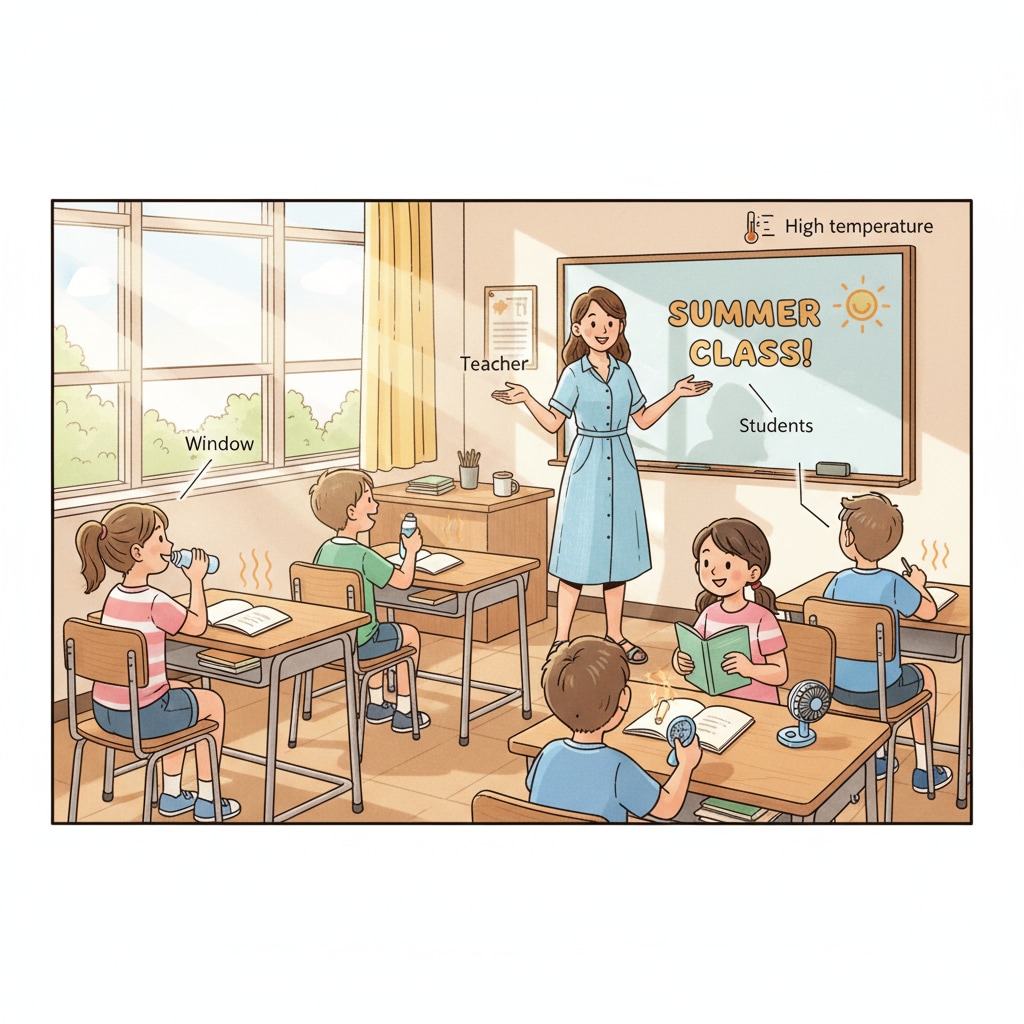In hot classrooms with no air conditioning, teachers often struggle to find the right balance between maintaining a professional appearance and staying comfortable. This can be a significant challenge, especially during the sweltering summer months. Let’s explore some effective strategies for teachers’ summer attire and ways to beat the heat.

Understanding the Challenges of Hot Classrooms
Hot classrooms without air conditioning can be a difficult environment for teachers. High temperatures can lead to discomfort, distraction, and even health issues. For example, excessive sweating can not only make teachers feel sticky but also affect their confidence. Moreover, the heat can make it hard for teachers to focus on teaching, and students may also be less engaged due to the uncomfortable conditions. According to Edutopia’s research on classroom environment, a comfortable environment is crucial for effective teaching and learning.
Optimal Summer Attire for Teachers
When it comes to choosing summer attire for hot classrooms, several factors should be considered. First and foremost, fabric is key. Lightweight, breathable materials like cotton, linen, and bamboo are excellent choices. These fabrics allow air to circulate, keeping the body cool. For example, cotton shirts are not only comfortable but also come in a variety of styles that can maintain a professional look. In addition, loose – fitting clothing is better than tight – fitting ones. Loose clothes create air pockets that help with ventilation. A flowy maxi dress or wide – leg pants can be great options for female teachers, while male teachers can opt for loose – fitting linen shirts and khaki pants. Color also plays a role. Light colors reflect sunlight, while dark colors absorb it. So, choosing light – colored clothing such as pastels or white can help keep the body cooler.

Footwear is another important aspect. Closed – toe shoes can be uncomfortable in hot weather, so open – toe or breathable shoes are recommended. Sandals with a heel can add a touch of professionalism for female teachers, and male teachers can choose loafers or breathable sneakers. However, it’s important to ensure that the chosen footwear is still appropriate for the school environment and allows for easy movement around the classroom.
Cooling Strategies for Teachers
In addition to choosing the right attire, there are several cooling strategies that teachers can adopt. One simple yet effective method is to keep a small fan on the desk. A portable fan can provide a refreshing breeze and help lower the perceived temperature. Another option is to use cooling products such as cooling towels. These towels can be soaked in water and placed around the neck or wrists to cool the body down. Hydration is also crucial. Teachers should drink plenty of water throughout the day to prevent dehydration, which can be exacerbated by the heat. Moreover, taking short breaks in a cooler area, if available, can give the body a chance to recover from the heat.
School Environment Improvement
Schools also have a role to play in creating a more comfortable environment for teachers. Installing fans in classrooms can significantly improve air circulation. According to EPA’s guidelines on indoor air quality in schools, proper ventilation is essential. Additionally, schools can consider providing shaded areas outside the classrooms where teachers can take a break during hot days. Moreover, ensuring that classrooms have proper insulation can help keep the heat out to some extent.
In conclusion, in hot classrooms without air conditioning, teachers can maintain professionalism and comfort through smart attire choices, effective cooling strategies, and with the support of improved school environments. By implementing these tips, teachers can focus better on their teaching and create a more conducive learning environment for students.
Readability guidance: The article uses short paragraphs and lists to summarize key points. Each H2 section provides relevant information in a clear way. The passive – voice and long – sentence ratios are controlled, and transition words are used throughout the text to enhance readability.


